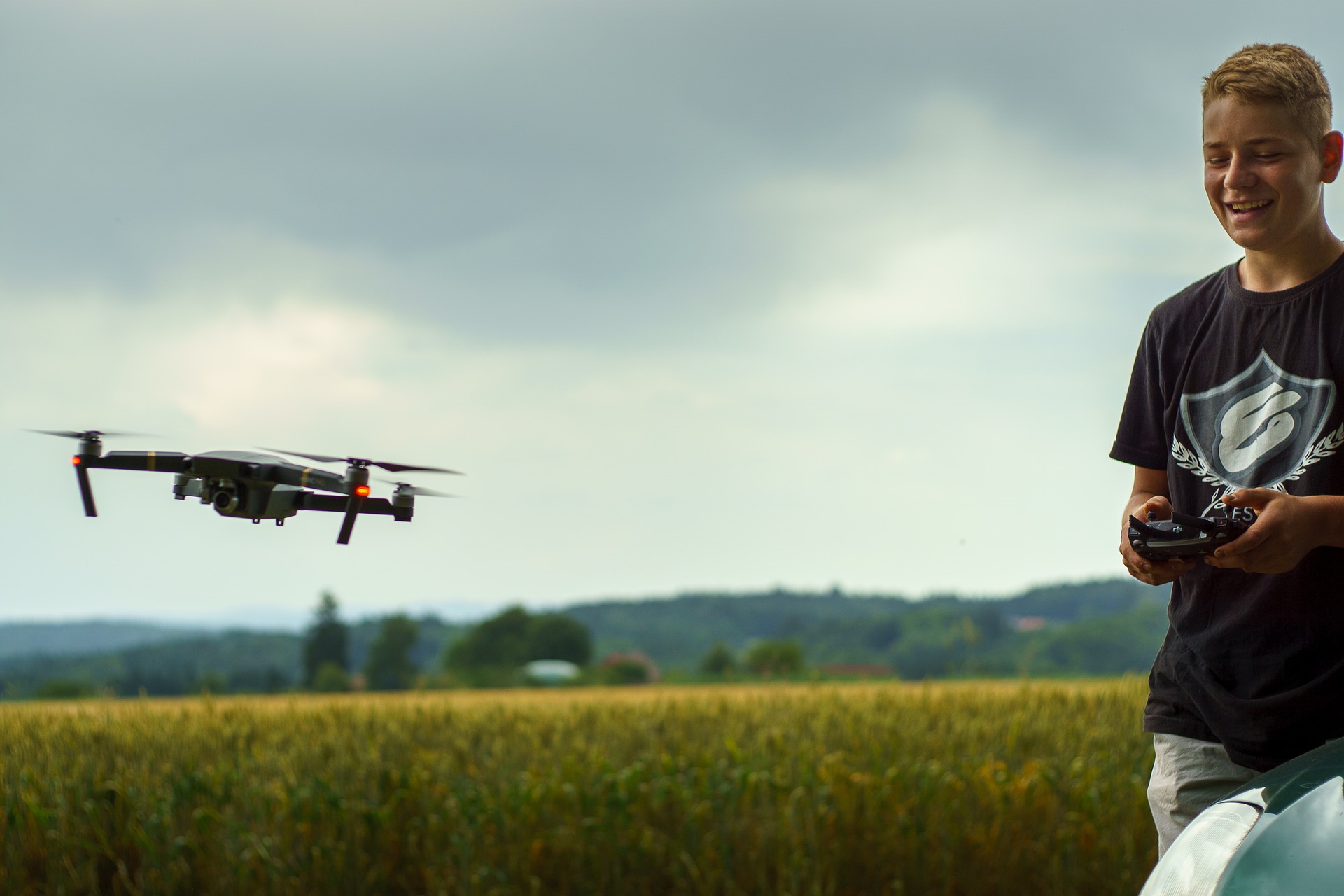By Steven McGinty
Drones are becoming an increasingly observable feature of modern cities, from tech enthusiasts flying drones in local parks to engineers using them to monitor air pollution. And there have also been some high profile commercial trials such as Amazon Prime Air, an ambitious 30-minute delivery service.
However, introducing drones into the public realm has been something of a bumpy ride. Although the Civil Aviation Authority (CAA) produces guidance to ensure drones are flown safely and legally, there has been a number of hazardous incidents.
For example, in April, the first near-miss involving a passenger jet and more than one drone was recorded. The incident at Gatwick Airport saw two drones flying within 500m of an Airbus A320, with one pilot reporting a “significant risk of collision” had they been on a different approach path. In addition – and just 30 minutes later – one of these drones flew within 50m of another passenger jet, a Boeing 777.
Videos have also been uploaded to websites such as YouTube, which have clearly been taken from drones – a clear breach of the CAA’s rules prohibiting the flying of drones over or within 150m of built-up areas. This includes events such as the Cambridge Folk Festival, a match at Liverpool FC’s Anfield Stadium, and Nottingham’s Goose Fair. Jordan Brooks, who works for Upper Cut Productions – a company which specialises in using drones for aerial photography and filming – explains that:
“They look like toys. For anyone buying one you feel like you’re flying a toy ‘copter when actually you’ve got a hazardous helicopter that can come down and injure somebody.”
Privacy concerns have also started to emerge. Sally Annereau, data protection analyst at law firm Taylor Wessing, highlights a recent European case which held that a suspect’s rights had been infringed by a homeowner’s CCTV recording him whilst he was in a public place. Although not specifically about drones, Sally Annereau suggests this decision will have far reaching consequences, with potential implications for drone users recording in public and sharing their footage on social media sites. The Information Commissioner’s Office (ICO) has already issued guidance for drones.
The CAA report that there were more than 3,456 incidents involving drones in 2016. This is a significant increase on the 1,237 incidents in 2015.
The response
Cities have often taken contradictory approaches to drones. Bristol City Council has banned their use in the majority of its parks and open spaces. Similarly, several London boroughs have introduced ‘no drone zones’, although the London Borough of Richmond upon Thames has a relatively open policy, only banning drones over Richmond Park. Further, Lambeth Council requires hobbyists to complete an application form “to ensure suitability”, a standard similar to commercial drone pilots.
There have also been several accusations of double standards as large commercial operators such as Amazon receive exemptions to CAA rules, in front of photographers recording events, hospitals delivering blood, and researchers collecting data.
Although cities have a responsibility to protect the public, they also have to ensure citizens are able to exercise their rights. The air is a common space, and as such cities must ensure that hobbyists – as well as multinational firms – can enjoy the airspace. Thus, it might be interesting to see cities take a more positive approach and designate ‘drone zones’, where hobbyists can get together and fly their drones away from potential hazards.
The Knowledge Exchange provides information services to local authorities, public agencies, research consultancies and commercial organisations across the UK. Follow us on Twitter to see what developments in policy and practice are interesting our research team.
Share
Related Posts
Tackling geographical inequalities is critical for ensuring that all parts of the country have the potential to prosper. When the UK was a member of the European Union, it was entitled to a share of funding from the EU’s structural ....
By Ian Babelon A new-old concept for proximity “Are we there yet?” Parents may patiently nod to their children’s insistent nudges on a 20-minute journey to… somewhere. Quite rightly, researchers have asked: twenty minutes to what? The answer may well ....



